What fabric is best for patches? You’re torn between delicate silk and rugged denim. But choosing the right fabric for patches is about matching personality with purpose.
Consider cotton for its versatility. It’s a crowd-pleaser that’s easy to work with and suits a variety of applications. Twill is another strong contender. It offers a textured surface that adds depth to your designs. Felt is your go-to for a bold, graphic look. Denim brings a durable, timeless quality that can withstand wear and tear.
As you sift through these options, let your patch’s destiny lead you to the perfect match.
What Fabric is Best for Patches?
Here’s a list of the nine best fabrics for making patches. Each has its own features and advantages.
1. Cotton

Considering the versatility of cotton, you’ll find it’s an excellent choice due to its tight weave and wide color range. This woven fabric has a high thread count. This ensures a smooth surface that’s ideal for the intricate details of embroidery.
As a versatile fabric, cotton lends itself well to various patch designs, from simple shapes to complex logos. It’s lightweight and soft, yet it provides a durable base that can withstand the rigors of daily use. Just remember to pre-wash to mitigate shrinkage and maintain the integrity of your stitches.
When working on patches, cotton provides a durable base that supports creativity and offers practical advantages for high-quality results.
2. Twill
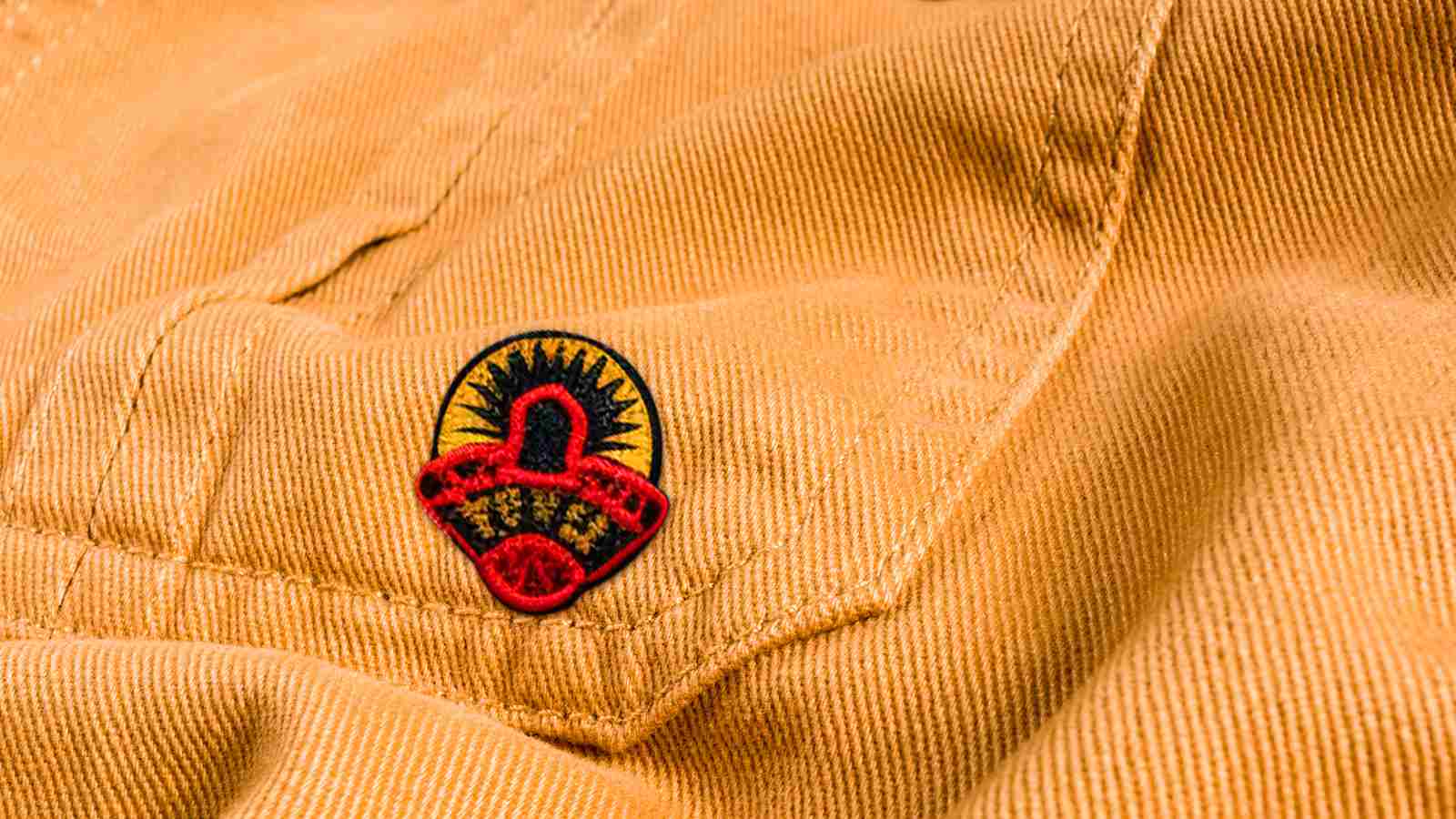
Twill fabric has a distinctive diagonal weave. It offers you a robust and durable option for patches that need to withstand frequent use. This fabric’s strength lies in its tight weave. This makes it an ideal choice for patches that will be ironed or sewn onto garments and accessories subject to wear and tear. The resilience of twill ensures that your patches maintain their shape and don’t fray easily, even after multiple washes.
Working with twill is relatively easy, despite its sturdy nature. It provides a solid base for embroidery, giving your designs a professional and crisp appearance. When durability is a priority, twill stands out as the go-to choice for patches. It’s capable of holding up against the challenges of everyday use.
3. Felt
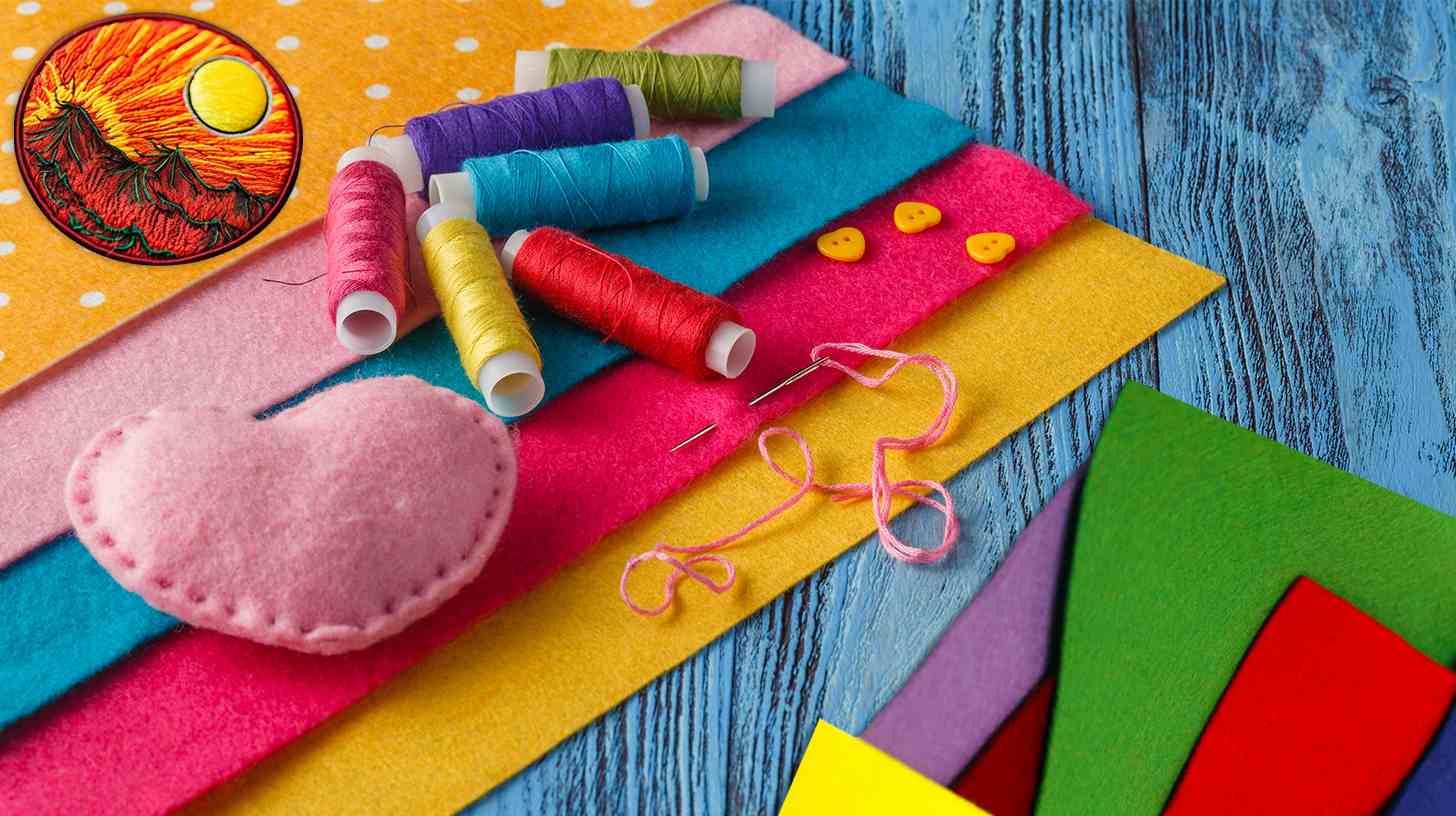
Versatility is key when you’re choosing fabric for your creative patchwork. Felt’s ability to resist fraying makes it an excellent option for both novice and experienced crafters. The dense texture of felt means your embroidered patch won’t unravel at the edges. This ensures a clean, professional look every time.
With a rainbow of colors at your disposal, you can personalize each patch to match your unique style or the theme of the item it’ll be sewn onto.
Whether you aim for a simple design or something more intricate, felt provides a sturdy yet flexible base that’ll hold up through wear and tear. It’s the go-to fabric when you need your patches to be both durable and vibrant. It seamlessly blends into book bags, jackets, or purses.
4. Denim
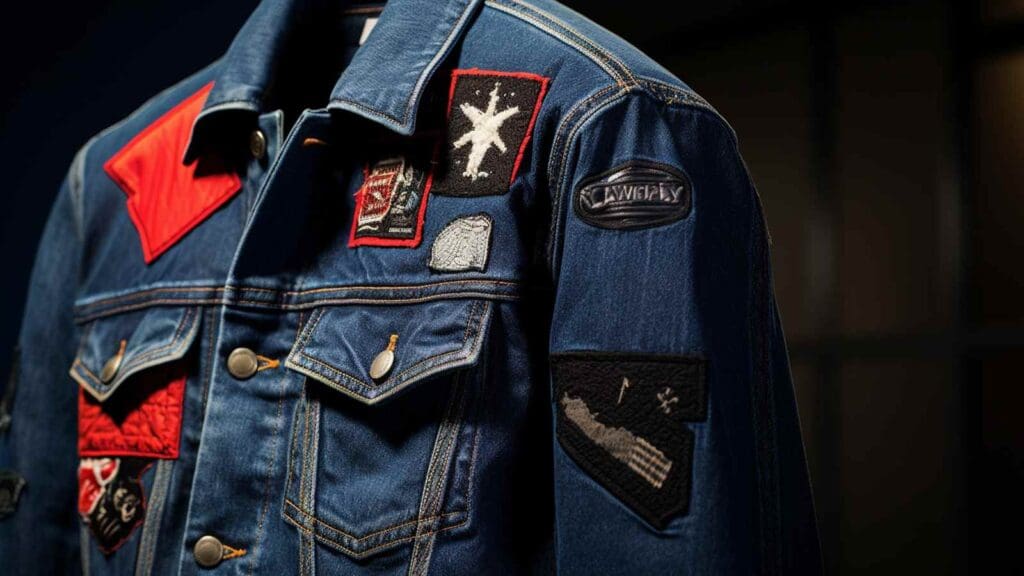
Transitioning from the softness of felt, you’ll find denim’s tight weave offers unmatched resilience for patches. It can endure frequent use and rough handling. A denim jacket adorned with a patch becomes a statement piece, thanks to the durable materials involved. Denim is the perfect patch base for items that are in the line of daily wear and tear.
When choosing denim, opt for pre-shrunk varieties to maintain a smooth finish even after washing. This ensures your patch won’t warp or pucker, keeping its pristine look over time. Whether you’re reinforcing a tear or adding a touch of personality, denim patches will stand the test of time. They’re a top choice for your rugged essentials.
Related: How to Decorate a Denim Jacket: 14 Creative DIY Ideas
5. Silk

Considering silk for your patches, you’ll discover its luxurious sheen and smooth texture. It can add an element of elegance to any garment. This fabric, composed of protein fibroin, has a glossy appearance that creates a sophisticated and lustrous sheen. This makes it a favorite for formal wear patches.
However, silk’s soft feel and delicate nature mean that it does require special care. Silk patches need to be handled gently, especially during cleaning, to maintain their beauty and integrity. If you opt for silk, it’s best for patches that won’t be frequently laundered or subjected to rough use.
Choose silk when you’re after that extra touch of class. But remember, its fragility demands a careful approach to ensure longevity.
6. Polyurethane

While silk offers an elegant touch, you’ll find that polyurethane fabric provides unmatched durability. This ensures they maintain a sharp appearance even with frequent use.
If you’re crafting custom embroidery patches, you should consider the robust nature of polyurethane. It’s designed to hold its shape and resist fraying. These make it a top choice for professional-looking patches.
The heavy weight of polyurethane pairs well with the density of the embroidery thread. It allows for detailed designs that won’t pucker or warp. When you demand patches that look crisp over time, turn to polyurethane.
It echoes the quality of commercially made emblems, giving your projects a polished and enduring finish.
7. Acetate
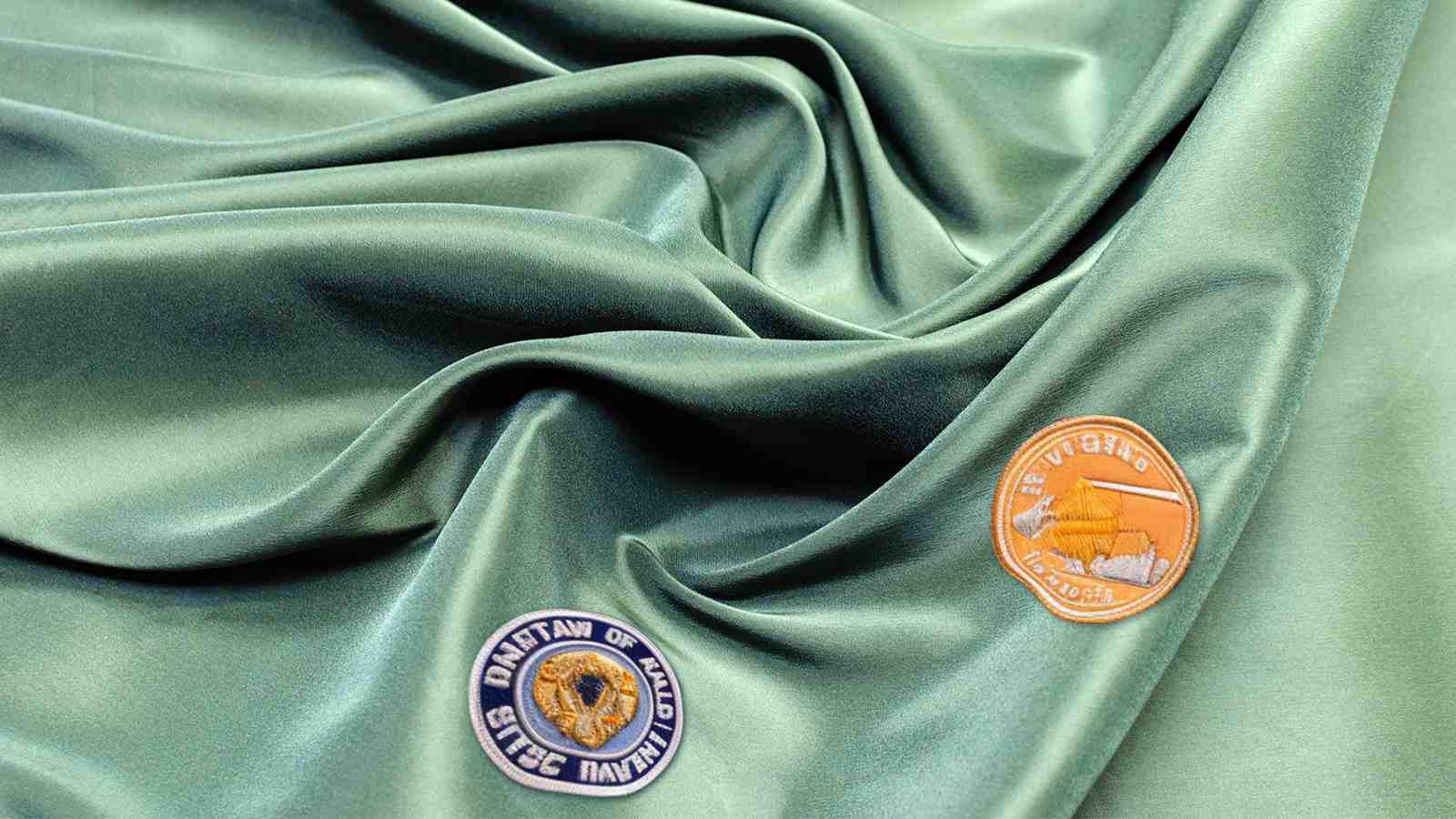
For a durable option that won’t fray or stretch, you’ll find acetate fabric to be an excellent choice. The fibers are long, contributing to the fabric’s strength and resistance to wear and tear. As one of the best fabrics for machine embroidery, acetate offers a unique appearance that creates a silky look, enhancing the visual appeal of your patches. However, be mindful that, despite its durability, acetate can snag easily. So you’ll need to handle it with care during the creation process.
Its resistance to mildew and mold also ensures your patches will last. This makes acetate a reliable material for various applications where longevity is key.
8. Wool

You’ll find that every wool patch offers remarkable durability, making it a superior choice for items that endure frequent use. Wool’s ability to withstand wear and tear is exceptional. This means your patches will stay intact on jackets, bags, or any frequently used gear.
With different types of wool available, you can select a fabric that complements any embroidery design, from the simplest to the most intricate. Wool is a great choice not only for its classic look but also for its flexible feel and easy-to-work-with nature.
Patches made from wool won’t fray easily. So they’ll keep a clean edge with minimal finishing. They ensure your project looks polished and professional.
Embrace wool for patches that are both durable and stylish.
9. Polyester

Many polyester fabrics offer exceptional durability. This makes them an ideal choice for your custom patches that require resistance to wear and tear. It’s one of the best options when you need a material that stands up to frequent use.
Polyester is resistant to fraying and can withstand pulling from the needle during the embroidery process. Its ability to maintain color and resist stains also contributes to its longevity. All these ensure your patch design remains vibrant and clean over time.
For a simple design or elaborate logo, polyester provides a smooth surface that showcases intricate details. Plus, its affordability and wide range of colors make it a practical and versatile choice.
With polyester, you’ll have patches that last, look great, and hold up under pressure.
Tips for Working with Different Patch Materials
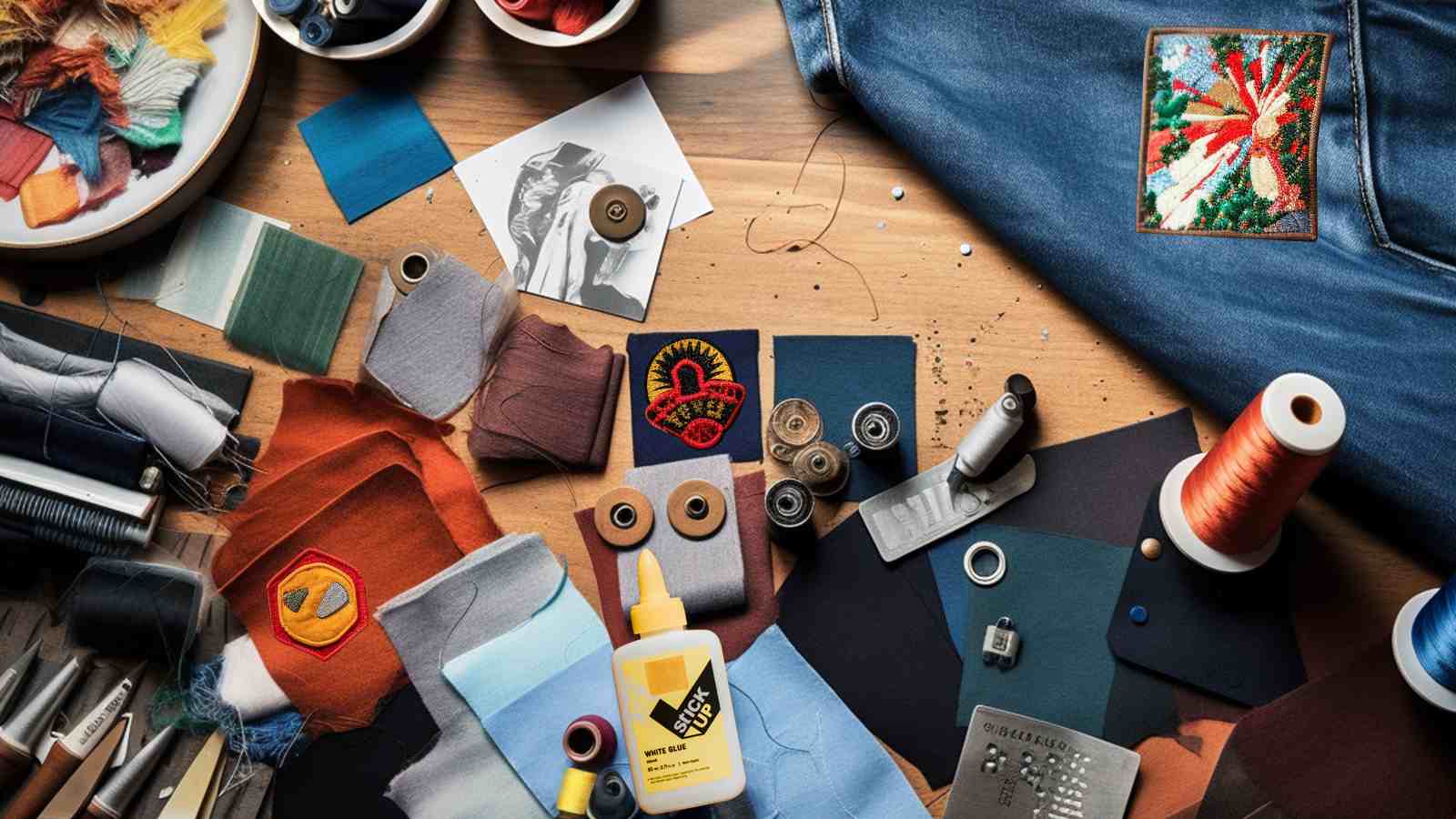
Having chosen your fabric, you’ll now want to master a few key tips for working with different fabrics to ensure your patches turn out perfectly.
When creating custom designs, your choice of fabric can significantly impact the final product. For fabrics that tend to fray, like cotton or denim, use Tacky Patch Fusible or a double-sided adhesive stabilizer. This is a common practice in the textile industry to achieve clean edges.
If you’re building a patch foundation, Prep Patch Film is your go-to for durability. For a professional finish, apply Post-Patch Iron-On to your designs to conceal any jumps and trims.
And if you’re looking to dazzle, consider Embroidery Magic Sparkle Sheets to add sparkle to your patches.
Conclusion
You’re explored a world of fabrics for your patches, each with its own charm and strength.
Cotton’s versatility, twill’s durability, felt’s ease, denim’s toughness, silk’s elegance, acetate’s sheen, wool’s warmth, and polyester’s resilience offer a palette for your creativity.
Remember, the right fabric isn’t only about looks; it’s about life’s adventures.
So choose wisely, stitch boldly, and watch your patches become enduring emblems of your artistic spirit.
FAQs
Q: What material will patches stick to?
A: You’ll find patches adhere well to most fabrics. But twill, denim, and cotton offer the best stickability for durability and ease of application, ensuring your patches remain secure and look great over time.
Q: What should I sew my patches on?
A: You should sew your patches onto sturdy fabrics like twill or denim to ensure durability and prevent fraying. Choose materials that match the patch’s weight and don’t stretch if they’re for rigid items.
Q: What clothes should I put patches on?
A: You should attach patches to sturdy garments like denim jackets or backpacks that can handle the weight and stitching without compromising comfort or integrity.
Q: What is the best material for painted patches?
A: Consider twill for its durability and non-fraying qualities. Or opt for felt for its versatility and rich color options.





